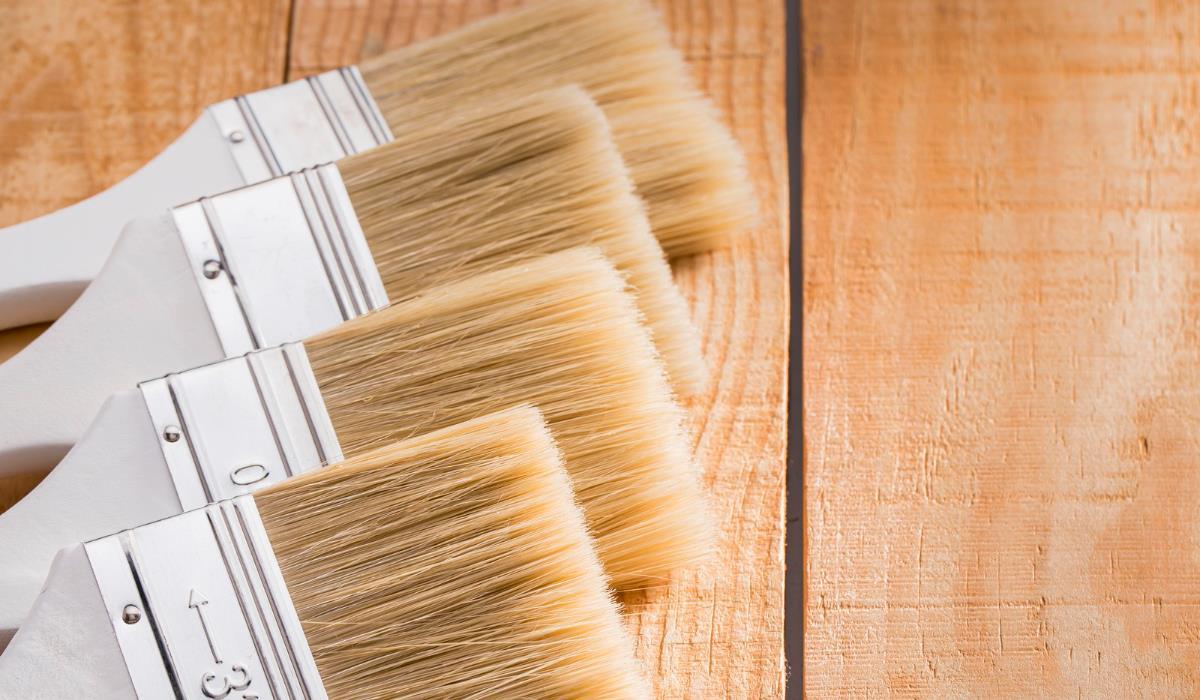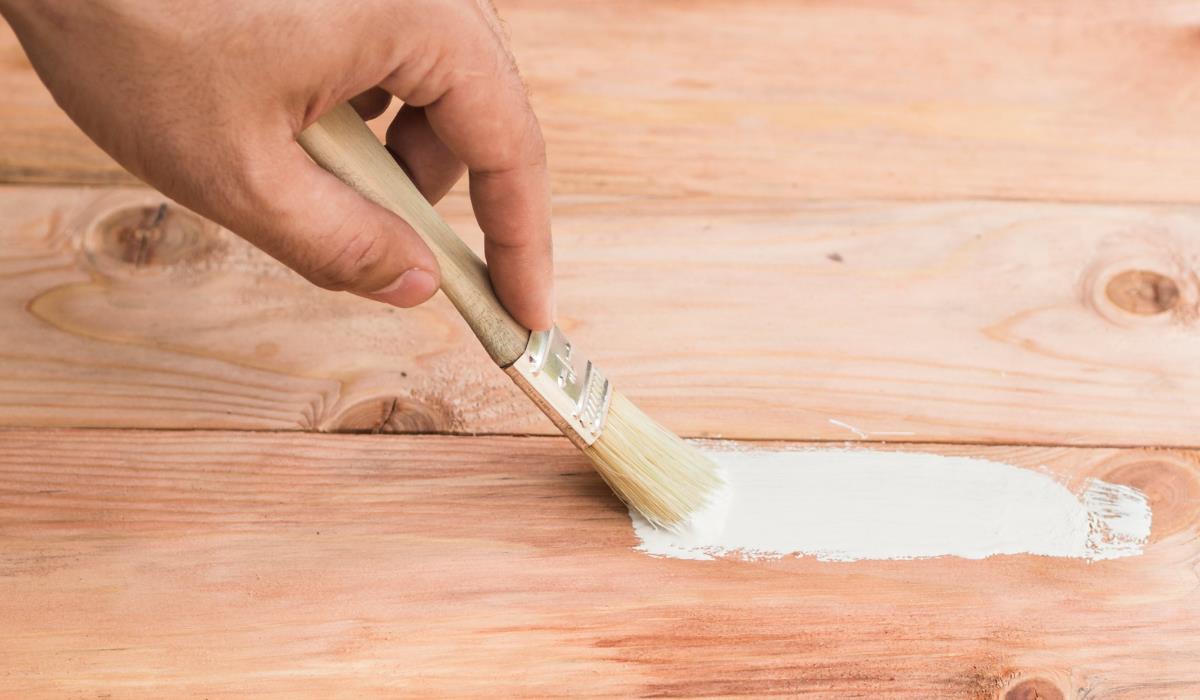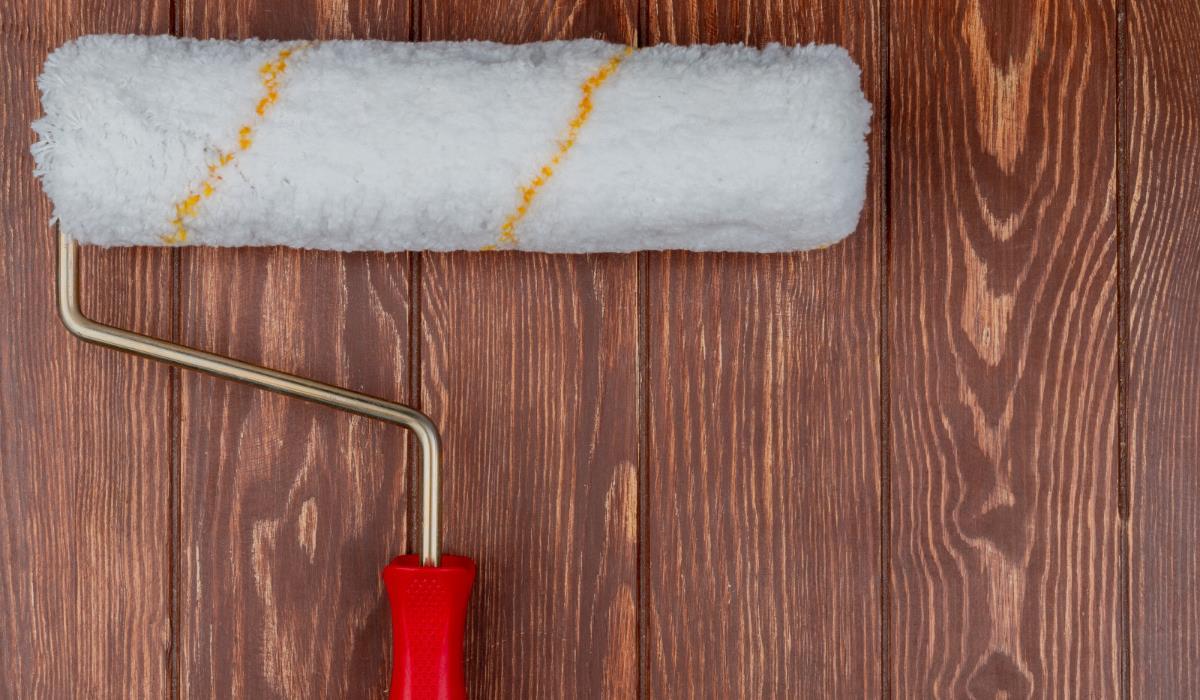Pressure-impregnated wood is extremely durable, but that doesn’t mean it won’t wear out or get damaged. Its surface can become gray and scaly, which accelerates the aging process. The reddish brown or natural tone of new pressure treated wood may not be to the taste of the homeowner who wants a more intense colour. Painting is an excellent option to lighten the wood and help it last longer.
Pressure treated wood can be painted with a brush, roller or spray gun. Before painting, the wood must be dry both on the surface and inside. The best paint for painting pressure-impregnated wood is an exterior water-based latex paint with a suitable primer.
Tip: Perform a water soak test to ensure pressure treated wood is sufficiently dry before primer or painting. After spraying it with water, if it absorbs it within 10 minutes, it means it is ready for further processing. If droplets form on it and remain on the surface, the wood needs more time to dry.
Unlike painting, pressure-treated wood only needs to be dry on the surface, not necessarily inside, before applying the sealant. This difference is important because some wood coatings, such as impregnations, are permeable to air, while other coatings, such as paint, retain moisture. If pressure-treated wood is painted too early, before it is completely dry inside, the paint may chip and the board may warp.
Should you paint pressure treated wood?
The new pressure treated wood is designed to be exposed to the elements and requires no additional protection. Climate, maintenance, type of design and wood species all affect its lifespan. Pressure treated wood from pine, fir or spruce that is relatively dry and maintained under the right conditions can last 20 to 40 years. When the copper impregnation of pressure treated wood loses its effectiveness, painting with an exterior paint is a good solution to help protect it.

Tip: If you are buying new pressure treated wood, an alternative to painting is to order pressure treated wood in a dedicated colour. They are usually available in wood tones such as red wood, walnut or cedar, and colored impregnations give the wood a deep color and longer protection than paint.
Before start
Painting pressure-treated wood with high humidity may result in paint peeling, cracking, bubble formation or discoloration.
Instructions
Clean the surface
Use a nylon brush and a wood revitalizing cleaner to remove dirt, mold and algae from the surface of the pressure treated wood. Areas closer to the ground are dirtier due to splashing. Sections of wood facing away from the sun are more susceptible to mold and algae growth.
Fill wood

Fill large gaps in epoxy pressure treated wood. Use a two-component wood consolidator before applying epoxy.
Check the humidity
After the wood is completely dry after cleaning, use a moisture meter to check the internal moisture content of the pressure treated wood. To check the outer dry, do a test soaked with water. Spray a few drops of water on the surface of the wood. If the water absorbs quickly, the surface of the wood is dry enough to be painted.
Apply primer with a brush to the wood
Pour the primer into a bucket of approx. 20 liters and add a roll screen to the inside of the bucket. Use a brush to apply primer to narrow, dimpled or high spots that the roller will not reach.
Apply the primer with a roller to the wood
Move on to using a roller on larger and flat surfaces. Apply the paint by dipping the roller into the primer and then spreading it over the sieve. Transfer the roller to the pressure treated wood. Roll out in small sections of approx. meter by meter. Take it slow and work carefully.
Apply paint with a brush to the wood
Allow the primer to dry for 30 to 60 minutes. Clean the paint bucket and roller screen. Add the paint to the bucket and mix thoroughly. Like the primer, use a paintbrush to apply paint to areas that the roller doesn’t fully reach.
Tip: mix the paint for better color uniformity. To mix the paint, add a few gallons of the same paint in a large container, then mix.
Apply the paint with a roller to the wood

Use a roller with a new roller to apply paint to the wood. Apply one coat and then let it dry. Waiting times for repainting can range from half an hour for matte paint to three hours or more for glossy paint. Apply a second coat when the first coat is dry.
When to turn to a professional?
Small painting projects are doable for most DIYers. However, large projects such as painting a deck or fence may require the help of a professional painting company.



